

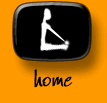 |
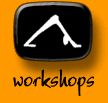 |
 |
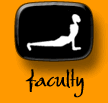 |
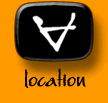 |
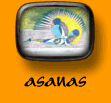 |
|
DOWNDOG | EAGLE | COBRA | HERO | HALF MOON | CORPSE | GATE
TRIANGLE | PEACOCK | LOCUST | COBBLER | SHOULDER STAND HEADSTAND | BRIDGE | CAMEL | COW FACE | UP BOW | INVERTED STAFF SEATED WIDE ANGLE | HEAD TO KNEE | TORTOISE | DANCER NOOSE  |
| Janu Sirsasana ~ Head to Knee Pose Images by Nancy Van Kanegan Begin by sitting with both legs extended in front and bend your right knee up a bit. Place your right hand under the inside of your right thigh near the knee and pull it out and back as far as comfortable. Still pulling the thigh back, grab the ankle with your left hand and bring the right foot in against the left thigh, with the heel as close to the right groin as possible. If this won’t happen, have the heel close to the left groin. If your knee hurts when you bring the foot in or it won’t flex back very far, you can put your right foot up higher near the left knee. Or place a block under the right shin near the knee (and perhaps a rolled cloth behind the knee) to relieve strain. To better align the legs, reach underneath one thigh at a time and pull it and back and up so it rolls inward a bit and the groins descend. Do the same with the buttocks, wriggling them back to get the floor of the pelvis level. As you opened the right knee out, you may have turned the pelvis a little to the right, so you are facing between the knees rather than over the left leg, where you want to be. To position your torso so your sternum (breastbone) is in line with your left leg, inhale and sit tall, and with an exhale strongly turn your pelvis and torso to the left, leading with your right hip and ribs. To help the pelvis turn, you can push your right hand against the front of your right knee for leverage. Or you can lean forward and take your right hand to the outside of your right leg or foot as a lever point, maybe even twisting to the left to help the pelvis turn that way. As you do this, keep pulling your left hip back and bringing your right hip forward. Make sure you have the left sitting bone firmly grounded and that both sides of the rib cage are extending evenly, so you’re not collapsing on the left and bowing out on the right. If you are, shift the ribs to the left to get them in line, and keep pulling the right ribs down and toward your left leg when you bend forward. Before you do, energize your left leg by flexing the foot and drawing the muscle energy in toward the bones and up the leg into the center of your pelvis. Make sure the toes and kneecap are facing straight up, and extend the leg bones out through the heel. Keeping the heel extended, push out through the ball of the left foot and spread the toes. Push the left heel and thighbone down, and press the right foot against the left leg, spreading the little toe into the floor. Keep both legs active by hugging the muscles to the bones and working the shins toward each other as you pull the inner thighs into the pelvis and push the thighbones out. Now you’re ready to start bending forward. To do so, with an inhale push down into the sitting bones and extend up through the crown of the head to keep the back of the neck long. As you exhale, stretch up and begin to fold over the left leg. Keep the sternum pulling away from the navel and the shoulders lifting up and back as you bring the heart forward and the dorsal spine (upper back) in. Stretch the arms forward to hold under the knees or calves, or perhaps around the ball of the left foot. With another inhale loop the shoulders back, extend some more through the spine, and pull back on your left hip. As you exhale, begin to fold more over left leg, leading from the right side to keep the rib cage even. Try to bring first your navel to the left thigh, then your sternum to the knee, and finally your forehead or chin to the shin. If you’re tight in the hamstrings and hips, it may not be possible to go forward very much without rounding the back and hunching the shoulders. So you’ll work more productively if you take your hands behind the hips, with the fingers pointing back, and push into the fingertips to lift yourself up and forward. This will enable you to keep the spine long and stay open across the collarbones as you work the pose. When you can keep the spine long and bend forward enough to bring the shoulders a foot or so in front of the hips without rounding, you’re ready to shift the hands forward. You can then either spider walk you hands along your left leg or grab the shin or foot and use that as an anchor to pull your spine longer. If you’re bending forward enough to hold the left shin or foot — or perhaps even enough to grasp your right wrist with your left hand in front of the foot — keep the elbows lifting up, forward and out as you pull the shoulders up and back. Rotate the forearms inward and the upper arms and deltoid muscles outward and back as you slide the shoulder blades down toward the hips. These actions will help you extend the front of the spine forward and keep the shoulders square (it’s easy to let the left one drop as you work the pose). Also, lift the lower belly back and up and root the tailbone down and in to engage the bandhas and further deepen the stretch. Hold the pose for five to eight breaths or more (I find janu sirsasana
very meditative and one that I like to hold for at least eight to 10 breaths).
As you work the pose keep the left leg strong and grounded, the spine
long, and the breath full and smooth, extending more and going a little
deeper with each exhale. When you’re ready, release the hands and
lift up with an inhale, perhaps extending the arms up overhead and stretching
luxuriously before releasing the pose and doing the other side. When you’re
done, just sit and notice how calm and easy this wonderful asana makes
you feel. Text by Tim
Noworyta |
||
|
E-mail: info@yogamind.com | Return Home :: mindfully designed by braddon.com :: |